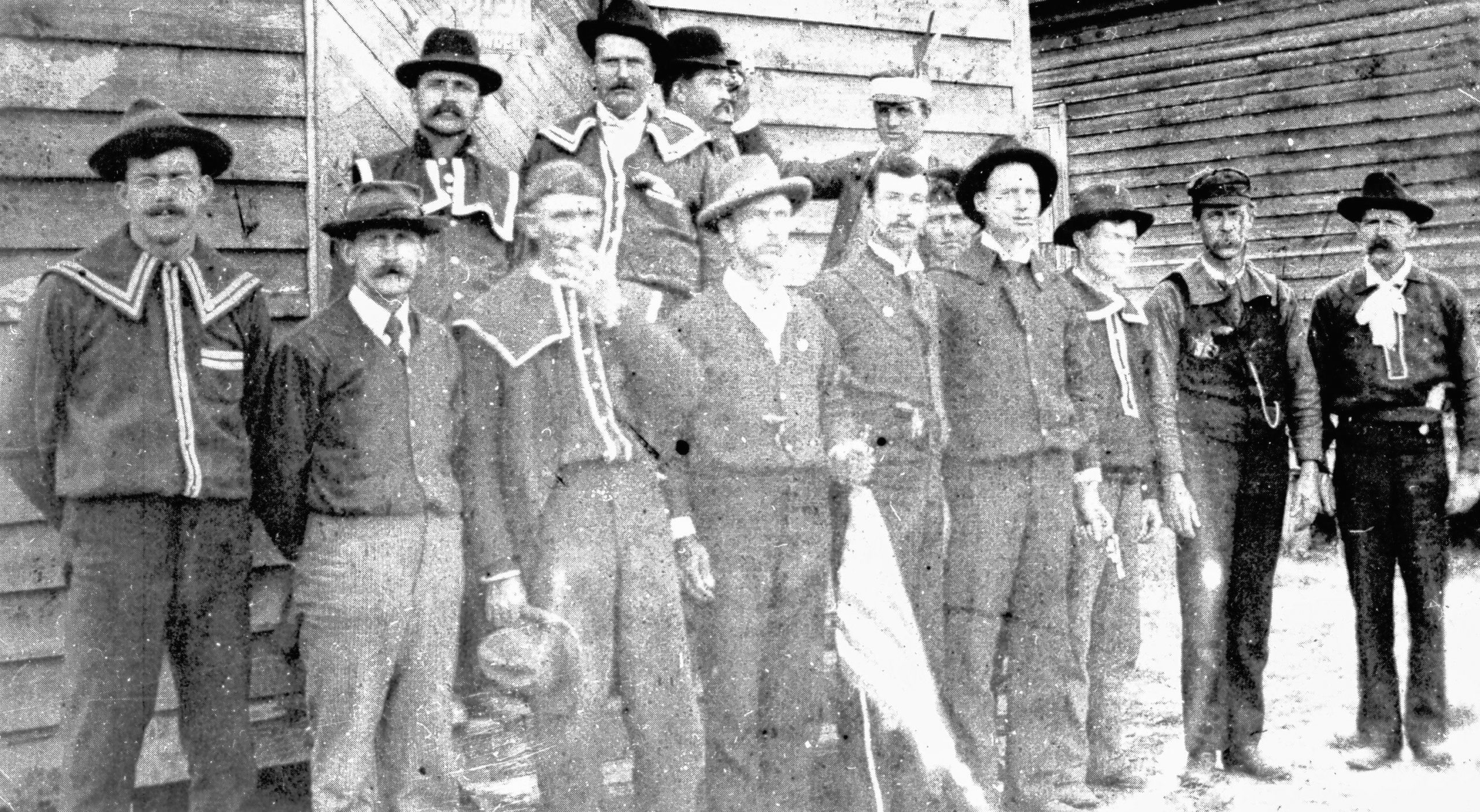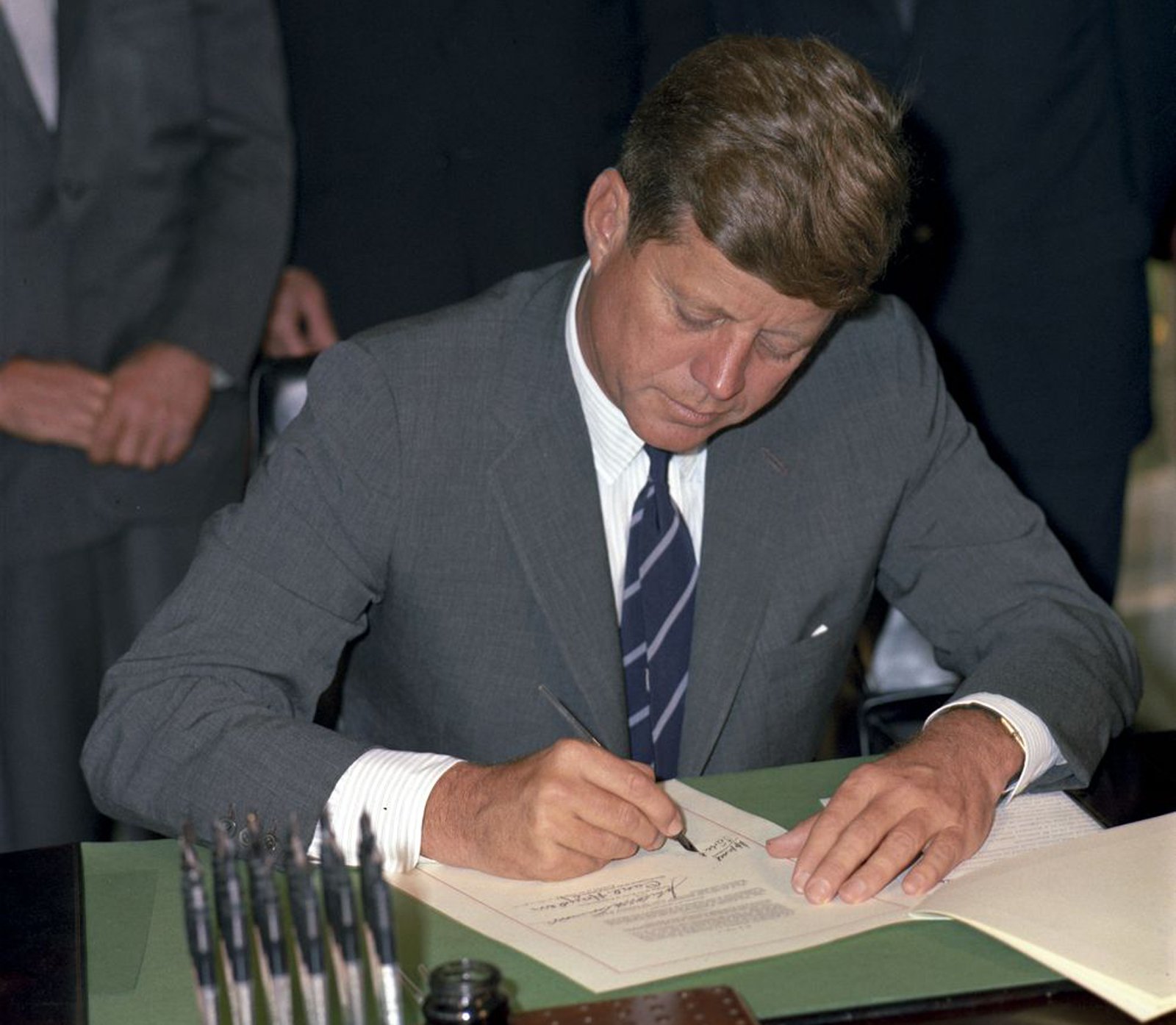The White Supremacy in America is a classic case, which is older than rivalry between Americanism and Communism. Not the Democratic Party, but rather the embryo of the Republican Party and the Republican Party itself which was originally an organization that fights to raise the dignity of blacks. The most famous is Abraham Lincoln, from the Republican Party. In fact, a very famous civil war in America, 1861-1865, one of its main roots was racism, white supremacy, confronted with a stronghold of slavery, which incidentally was Afro-American. Civil war broke out after a prolonged battle over the status of Slavery in the United States where twenty states in the US (mostly in the North) supported anti-slavery, while other US states were pro-slavery. So the other term of the civil war at that time was the North’s war against the South. The two leaders competed and the two generals exchanged strategies, namely Abraham Lincoln vs. Jefferson Davis and General Robert D Lee vs. Ulysses Grant.
The completion of the civil war does not mean that the business was over. About 30 years later, America again carved its own historical disgrace. The events of Wilmington, North Carolina, 1898, had become a disgrace to American racism to this day. Entering the 1890s, the City of Wilmington showed rapid progress regarding the social relations between whites and blacks. Afro-Americans there experienced unprecedented economic progress. The majority of blacks at that time entered the middle class level, even about a quarter of the city’s parliamentarians were filled by blacks. Then North Carolina managed to send several black members of the House of Representatives and Senates at the federal level. Two major media outlets in Wilmington were also owned by black businessmen, Wilmington Post and the Daily Record.
Black politicians in the Republican Party collaborated with white populist parties, which were filled with white middle-class workers. They collaborated to form a Fusion Party, and defeated the racist Democrats in the 1894 and 1896 elections. Practically, key positions in city government were controlled by the Republic, which shared a role with the black middle class. But for the Democratic Party at that time, the situation was a disaster, considered as Un-America, a denial of the fate of white supremacy in America. So they started the tactics to revenge, a media war, with a variety of content that will incite hatred against blacks begins.
In various democracies’ media caricatures, various themes and images that depict black people were portrayed, including pictures of white women who could be threatened by black men at any time. For two years, these efforts run pretty well. In the elections, 1898, the Democratic Party won many votes from whites and became the majority in parliament of Wilmington, after committing various frauds. One of them was by lowering the Democratic Party paramilitaries (the most famous is The Red Shirt), to prevent black people from going to the election location.

Because it was a midterm election, automatically not all positions changed, there were still many posts of power in the government occupied by old officials of the Fusion Party. But what was the case, the Democratic Party went further. Democrats carried out a “coup d’etat” on the remaining Wilmington government. On the ground, Democratic Party paramilitaries carried out killings, destruction and arson of black property, then evicted them from Wilmington. This was one of the disgraces of racism in America, other than Tulsa.
If you have been to North Carolina, then go to the Wilmington Library and look for data about the 1898 Wilmington incident, you will most likely be refused to get it. Because the incident has been considered a disgrace in America, especially the disgrace of the Democratic Party, which today has become a party that is very keen to fight for the interests of black citizens and Hispanic voters in America. The model of partiality slowly began to change after the civil war in which many Republicans benefited from the War. They became government partners in the procurement of weapons and logistics for the war at the time, so that a few years later, they became industrialists and big businessmen in various states. As a result, the Republicans finally assumed that their struggle for blacks was more than enough. In early 1900, issues in the Republican Party changed direction to the economic interests of the new entrepreneurs and industrialists.
Then in the Roosevelt era, the pendulum of the black and white equality struggle moved to the Democrats. Because at that time, the failure of the market in the Great Depression era, required policies that touched more workers and “they had no communities” which in fact the majority were black and Hispanic. This struggle for the Democrats kept going to the era of Kennedy, who died before succeeding an amendment on the equality of white and black rights before the constitution. Then Lyndon Johnson, Kennedy’s deputy who rose to president, continued the amendment to completion.

And the position of the Democratic Party’s struggle related to civil rights equality continued to this day, especially by Bernie Sander. Indeed, there are quite a lot of the Democrats’ votes on that side today, including immigrants from Latin America and the like, who has been tried to be dammed by Trump using anti-immigration polices or policies that make it difficult for immigrants to gain US citizenship status.
And even President John F. Kennedy, on June 10, 1963 at American University said: ‘If we cannot now end our differences, at least we can help make the world safe for diversity.’ USA is a free & diverse nation, from that diversity we gain our strength. ” From his statement it is clear that Kennedy also doubted and admitted indirectly, the struggle for diversity in America is not an easy matter.
And Kennedy was killed on November 22, 1963 in Dallas, only a few months after the speech. The accused was Lee Harvey Oswald. But Jack Ruby shot him dead two days later, before the Oswald court judgement was held. To this day, there are still several versions of the story about this shooting. But the pint is that year, Kennedy and the Democrats were fighting for the Civil Rights Proposal in the American parliament. But Kennedy got the same fate with Abraham Lincoln of the Republican Party. Then with an extraordinary political struggle, the Civil Rights Act of 1964 was finally completed in the hands of Lyndon B. Johnson, Kennedy’s deputy and successor.
After America had a black president, Barack Obama, conditions actually was not better than before. According to many experts in America, there is absolutely no change. Obama responded to the shooting of Trayvon Martin, Micheal Brown, or the attack of the black church with extreme neutrality and caution speech. It’s really no different from Trump today. In public, the languages of Obama and Trump differ slightly, they condemn all forms of unilateral supremacy and will not tolerate riot, bigotry, looting, and anarchy.
It was just a light difference, in the events of Charlottesville 2017, where from many source of informations it was proven that the White Supremacy committed violence against activist prodiversity, but Trump chosed a very neutral position and avoided at using language that would corner his voter base. Especially at that time, white supremacy came to the surface after the statue of Robert D Lee, the general who led the civil war from the confederation, was torn down by pro-diversity circles, because they considered Robert D. Lee as a symbol of slavery in the south during the civil war. Trump made a short speech a few days after the Charlottesville incident:
“We condemn the strongest possible terms of this egregious display of hatred, bigotry and violence on many sides, on many sides.”
Trump repeated and emphasized the word “on many sides“, not just for white supremacist, which united under the banner of “Alt Right” – in which there were Neo-Nazi communities and organizations, KKK, RAM, etc., (Antifa’s opponents), which were clearly starting an act of violence, even by using a car to break through anti-white supremacy activist.
Obama also took the same style in front of the media. His language was slightly different. David Remnick, from the New Yorker Daily, who was one of the winners of the 1994 Pulitzer, after the Micheal Brown incident, asked Obama about race, in the White House conference room. Obama’s response was very formal, like previous presidents. Like Obama’s speeches during the campaign. “There is no liberal of America, there is no conservative of America, there is no white of America, there is no black of America, there is only the United States of America.” As a result, Obama was finally condemned by black activists and pro-diversity activist at that time. But, as Remnick said, several minutes after the conference, Obama visited Remnick in the hallway of the room.
“You got to remember, I am the President of the United States. I am not the President of Black America. Everybody knows who I am, cause they look, they can see me. I am black. But anything I say on race, I have to be extremely careful and calibrated,” Obama told Remnick.
So it was really understandable for JFK to say it with the initial word “If” in his speech on June 10, 1963 at American University. “If we cannot now end our differences, at least we can help make the world safe for diversity.” USA is a free & diverse nation, from that diversity we gain our strength. ” From this statement it is clear that Kennedy also doubted and admitted indirectly, the struggle for diversity in America is not an easy matter. The battle will always be going crazy when the word “Black Live Matter” appears, due to the word “White Live Matter” will also be born. It is a paradox of divided America, isn’t it.














Comments